Advertiser content
Advice on agroforestry systems
The Woodland Trust works closely with farmers to integrate trees into your farm business.
When planning your tree planting, the guidance below can provide ideas and designs to meet your objectives.
Shelterbelt: strip of trees and shrubs
A shelterbelt is made of trees and shrubs designed to protect livestock and crops from harsh weather.
These living buffers are carefully planted in staggered rows, combining different species and heights of trees to create a layered protection against the elements.
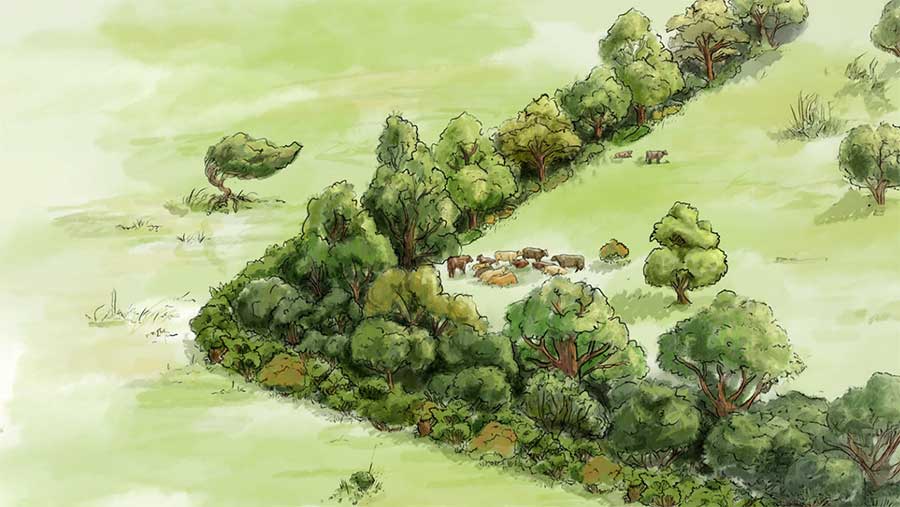
Shelterbelts help protect livestock and crops from increasingly extreme weather © Woodland Trust
Learn more about the benefits of shelterbelts.
Silvopasture alleys: rows of trees in livestock fields
Alley planting uses strips of trees and shrubs to divide a piece of land into areas which can then be used as sheltered grazing blocks for livestock.
It’s incredibly adaptable, with the orientation of trees tailored according to the slope, prevailing wind or existing management of your land.
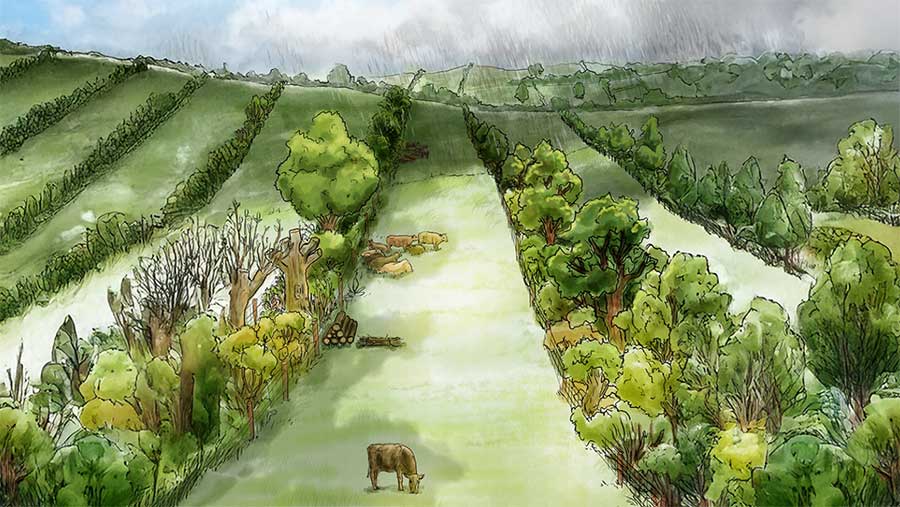
Silvopasture alleys are a versatile type of agroforestry that can integrate with existing farming systems © Woodland Trust
Learn more about silvopasture alleys.
Hedgerow management: caring for your field boundaries
Hedgerow management is the process by which hedges are maintained and cared for.
As hedges generally don’t occur naturally in the landscape, they can quickly lose their shape and structure if left to their own devices and require management as they grow.
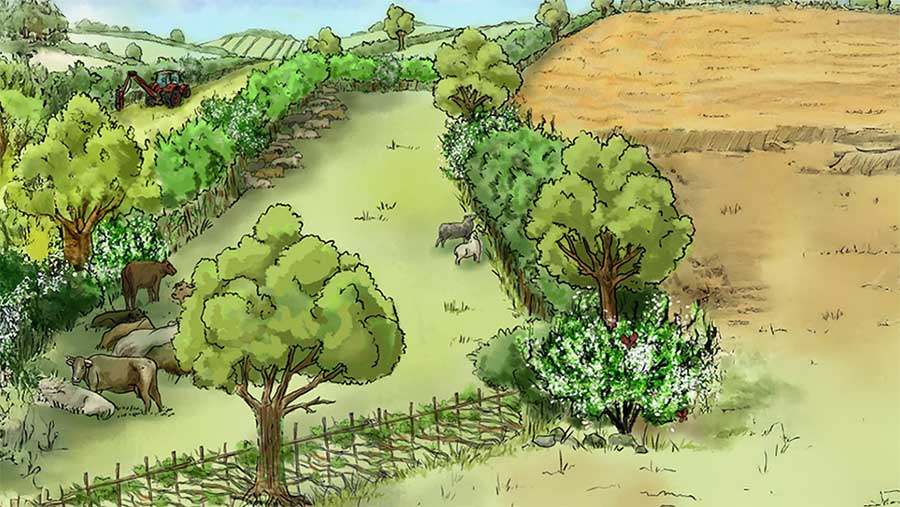
Hedges can provide shade and shelter to both crops and livestock during periods of extreme weather © Woodland Trust
Learn more about hedge management.
In-field trees: individual trees or clusters of trees
These are single or groups of trees and shrubs planted within a field, providing shade and shelter for livestock.
They have the potential to grow wide, complex crowns and may become the ancient and veteran trees of the future.
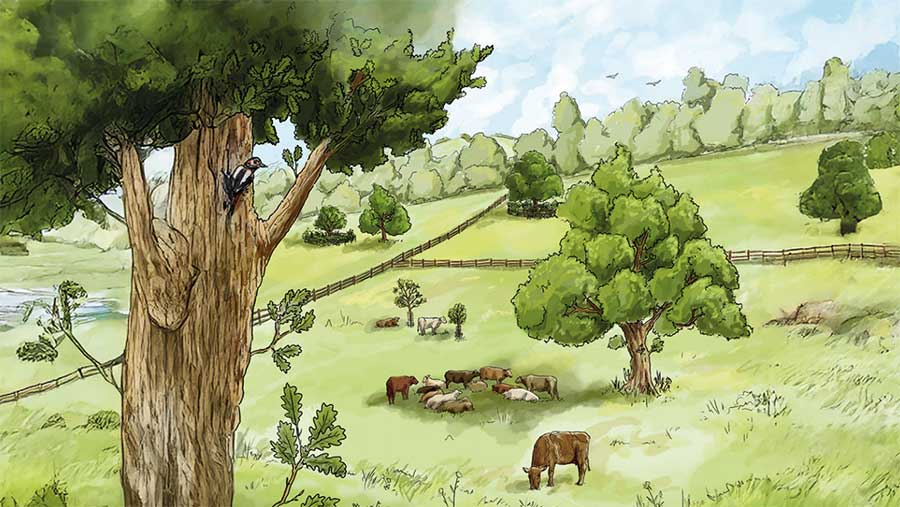
In-field trees can provide shade and shelter right across a field © Woodland Trust
Learn more about in-field trees.
Riparian planting: trees alongside watercourses
This is the planting of trees and shrubs along the banks of rivers and streams. Riparian planting can be designed in a way which delivers maximum impact for farmland, water quality and nature.

Riparian planting can improve the health of rivers and streams © Woodland Trust
Learn more about riparian planting.
Silvoarable systems: trees in arable fields
Silvoarable systems are most commonly made up of rows of trees, which are spaced within fields to create alleys which can continue to be farmed for arable production.
Various species of trees can be planted to suit different objectives, including fruit, nut, timber or biomass production, or boosting biodiversity.
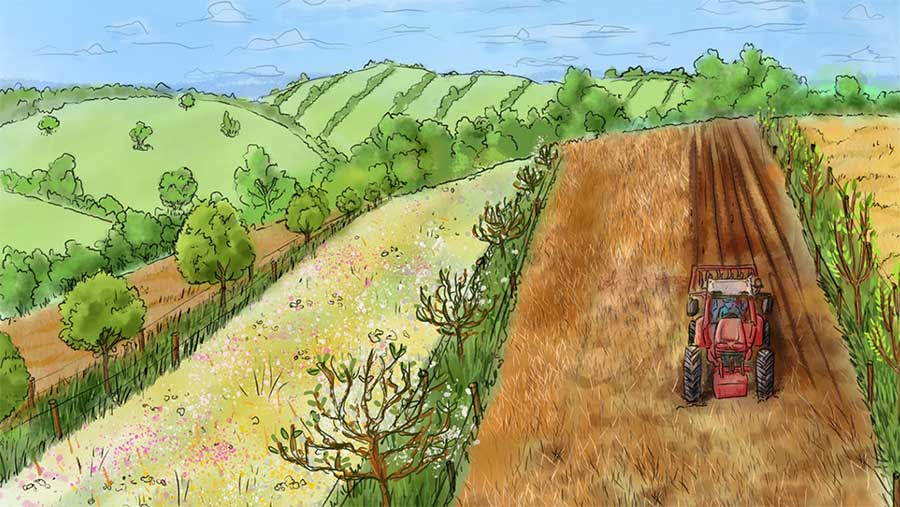
Silvoarable systems offer the opportunity to diversify the farm business © Woodland Trust
Learn more about silvoarable systems.
Silvopasture roundels: enclosures or clusters of trees
Roundels can be different shapes and sizes and, many opt for a square format approach for ease with fencing.
The design can be easily replicated or adjusted to suit different soil types, farm outputs and livestock.
They also add beauty to the historic landscape with a natural aesthetic in keeping with traditional wood pasture.
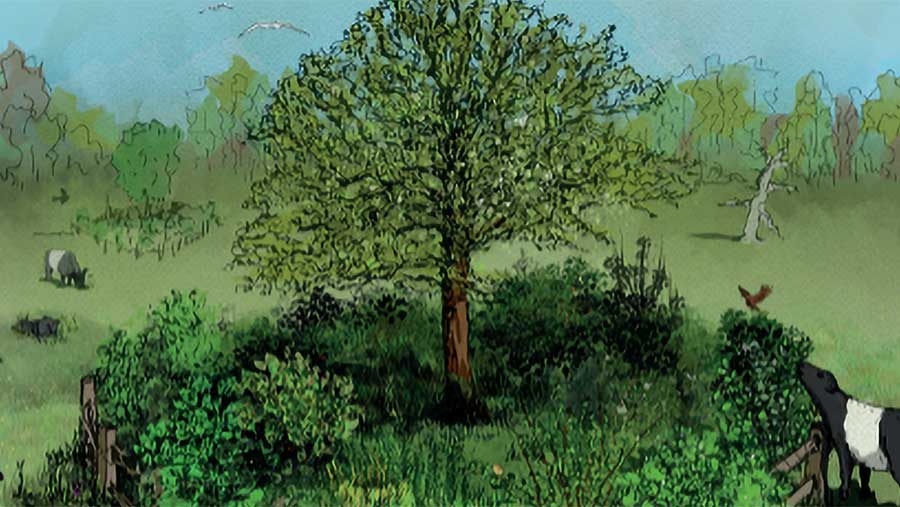
Silvopasture roundels provide shelter and beneficial browse for livestock © Woodland Trust
Learn more about silvopasture roundels.
To learn more about agroforestry and its benefits for farming, nature and climate, please visit:
How the Woodland Trust can help
We have advice and funding available to help integrate trees into your farming system.
For more information on the funding available please visit:
Tree planting – Woodland Trust
Provided by
Trees can maintain or even enhance the farm’s main agricultural output while improving the resilience of the business and simultaneously helping to protect soils, rivers, biodiversity, and climate.
Systems can be designed to avoid the potential trade-offs that occur in many modern farming systems between food production and public goods, like clean air.
How can the Woodland Trust help
Our advice and funding can help you to integrate trees into your farming system. With a bespoke plan designed for your individual business, we can offer up to 100% funding.
For more information on the funding available, please visit:
Tree planting – Woodland Trust
For more information on agroforestry, please visit:
